If you’re spending time in Kyoto or Osaka then a day trip to the city of Hiroshima and the small island of Miyajima is a very easy and a Japan must do. A visit to Hiroshima offers an incredible insight into the historic sites of a city devastated by an atomic bomb while Miyajima is home to the revered Itsukushima Shrine and its iconic floating tori gate. We spent a fascinating day exploring the sights of both Miyajima and Hiroshima and have put together this itinerary of must-see sights and things to do in Hiroshima and Miyajima. Happy planning!
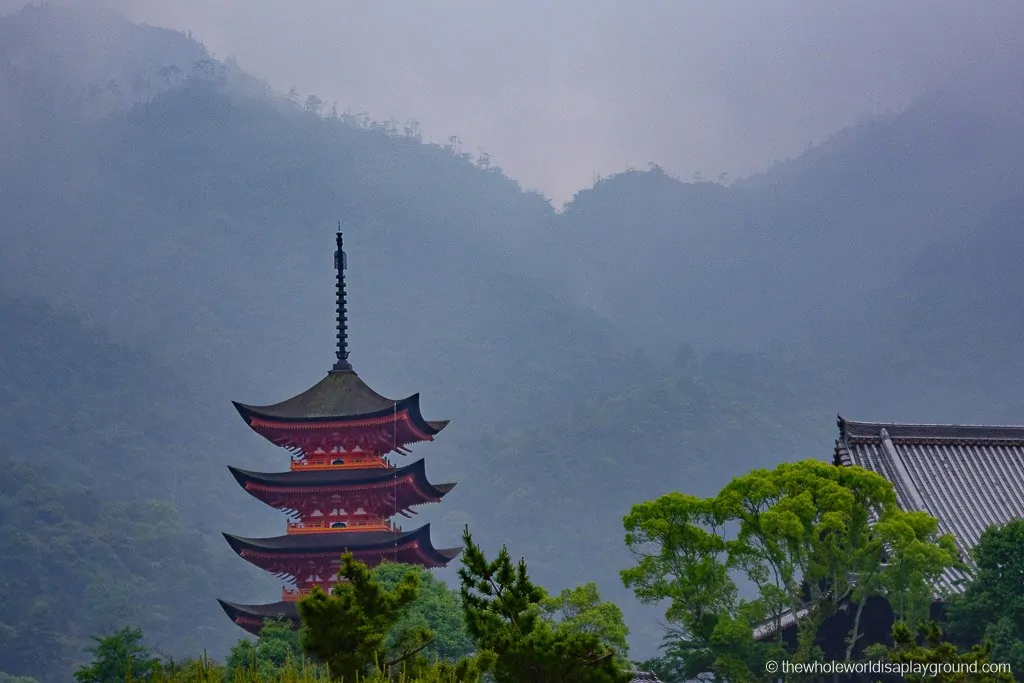
Visit Hiroshima Visitors Pass
If you are planning to visit Hiroshima and Miyajima Island we recommend purchasing a visito Hiroshima visitors Pass. The pass gives you unlimited rides on all street cars, buses and the Miyajima ferry for one, two or three days. You can purchase them in advance and it will save you time and money during your time in Hiroshima – check prices now!
Buy your Hiroshima Visitors Pass now
Miyajima
Miyajima, an island of the coast of Hiroshima, is regarded as the Island of the Gods. Its an eclectic mix of Buddhist temples, Shinto shrines and wild deer roaming the streets combined with the sense of taking a step back in time.
1 | Itsukushima Shrine
The UNESCO World Hertiage Site Itsukushima Shrine is the main attraction on the sacred island of Itsukushima in Miyajima and its floating tori gate has graced a million pictures. The iconic tori gate which stands separately from the island is equally impressive at high tide when it appears to float on the water and at low tide when it is reachable by foot.
Where to stay in Osaka and Kyoto
Most visitors to Hiroshima and Miyajima take day trips from the cities of Osaka and Kyoto which are a train ride away – we took our day trip when we were based in Kyoto.
Where to stay in Kyoto:
- Ibis Kyoto Station: The Ibis is a great value option and, it’s so close to Kyoto station, you can catch a glimpse of the hotel from the Shinkansen platform – Check latest prices here
- Ohanabo Ryokan: Kyoto is the perfect place to experience traditional Japanese hospitality by spending a night in a ryokan. Japanese Ryokan’s have traditional futon bedding on a woven-straw floor and Yukata robes are the clothing of choice for dining and onsen visits. Ohanbo is located close to Kyoto station – Check latest prices here
Kyoto sightseeing tip: Kyoto Station is the perfect location for a Kyoto stay as most visitors arrive and depart from Kyoto station and sights such as the Bamboo Forest and Fushimi Inyari Shrine are just a few minutes train journey away. It also has a host of great food options like most of Japan’s major train stations.
Click here for the best Kyoto Hotel prices
Where to stay in Osaka:
- Swissotel Nankai Osaka: located on top of Namba’s Nankai station with easy access to airport train and comfortable rooms – check prices here!
- Mitsui Garden Hotel Osaka Premier: one of the more reasonably priced Osaka options with good rooms and a convienent shuttle bus from Osaka station – check prices here!
Click here for the best Osaka hotel prices
2 | The Roaming Deer
Wild deer wander freely through the streets of Miyajima and the thousand-strong population line the tourist paths throughout the island. Legend has it that the deer were sacred messengers from the gods. The deer meander happily among the tourists hoping for their share of some deer cookies which are sold across the island. It’s a beautiful sight!
Things to do in Hiroshima and Miyajima tip: The deer will chew on anything from shirts to paper to their deer cookies!
3 | Goju-no-to Pagoda and Toyokuni Shrine
Popularly known as the five story pagoda, the picturesque Goju-no-to Pagoda is a mix of Japanese and Chinese style and was built in worship to the Buddha of Medicine. The 1,000 Mat Pavilion sits alongside the five storied pagoda and is dedicated to Toyotomi Hideyoshi, one of the three unifiers of Japan in the 16th century and is the largest structure on Miyajima Island.
Hiroshima and Miyajima things to do tip: This is a popular spot in sakura season when the cherry blossom trees are in abundance around the pagoda.
4 | Indulge in some Momiji Manju
Shaped like a Japanese maple leaf, Momiji Manju is a steamed bun filled with a bean jam filling. Momiji Manju are abundant on Miyajima and a must try when on the island!
5 | Explore the streets of the old town
Miyajima is a treasure trove of traditional architecture and hidden restaurants and bars and walking its streets is akin to taking a step back in time. We loved wandering through the maze of tiny alleys.
6 | Daisho-in Temple andMount Misen
Mount Misen is Miyajima’s highest mountain at 500 metres and the Daisho-in Temple is nestled at its base. Daisho-in is the most well known temple in Miyajima and, when entering the temple, one can turn the inscriptions on the metal wheel to benefit from the blessings of the reading of sutra.
Those who make it to the top of the Mount are rewarded with historical monuments and spectacular views on a clear day. It’s perfect for hiking or, if you prefer, a ropeway transports visitors up and down the mountain.
Hiroshima
Hiroshima will likely forever be known as the first city in history to have suffered the dropping of an atomic bomb, an event which occurred on August 6 1945 during World War II and resulted in the loss of life of over 140,000 people. The city has been rebuilt from its ruins and historical buildings have been reconstructed. A visit to Hiroshima offers an incredible insight into the absolute the devastation of 1945 and the subsequent rebirth of the city.
The Hiroshima Peace Memorial Park
At the centre of the city is the Hiroshima Peace Memorial Park and, rather than redevelop, it was decided to dedicate this area to the legacy of Hiroshima. The park contains a number of memorials to the atomic bomb.
7 | Atomic Bomb Dome
The A-Bomb Dome was only 160 metres from the centre of the bomb and the metal framework of the building remained intact as the bomb exploded almost directly overhead. The building, a designated UNESCO World Heritage Site stands almost exactly as it did after the bomb and remains as both a memorial and a symbol of peace.
8 | Peace Memorial Museum
We’ve visited some incredibly sad sites during our travels and the Peace Memorial Museum truly broke our hearts. The museum details the dropping of the bomb and the aftermath of the devastating event.
9 | The Peace Flame and the Cenotaph
The Cenotaph contains a cement chest with a list of the names of every known person who died from the bombing and represents a shelter for the souls of the victims. The memorial, which frames the A-Bomb dome, contains a Japanese inscription reading ‘Rest in Peace, for the error shall not be repeated’. A pond leads from the Cenotaph to the Flame of Peace the fire of which is promised to burn until the last nuclear weapon has left the earth.
10 | The Children’s Peace Monument
The Children’s Peace Monument commemorates the thousands of child victims of the atomic bomb. One of the children, Sadako Sasaki, is immortalised at the top of the statue and thousands of origami paper cranes are offered to the monument in the hope that her wish, for a world without atomic weapons, will be granted.
11 | Downtown Hiroshima
Downtown Hiroshima is bright, busy and bustling with life. It is home to Hondori Street, a pedestrian street filled to the brim with shops and restaurants and the food options are fantastic – Hiroshima style Okonomiyaki, a fried batter and cabbage dish, is a must try and the ramen is as good as we tasted anywhere else in Japan!
Himjei
We made a special stop in Himjei to feed our Unesco World Heritage obsession with a visit to the city’s magnificent castle.
12 | Himjei Castle
Himjei Castle is one of Japan’s most magnificent historic sites and is a designated UNESCO World Heritage Site. Incredibly, the castle, which was completed in 1609, never fell victim to wars, earthquakes or fires and is only one of 12 original surviving castles in the country.
Hiroshima and Miyajima things to do tip: Himjei Castle is another popular spot in sakura season when the cherry blossom trees line the castle.
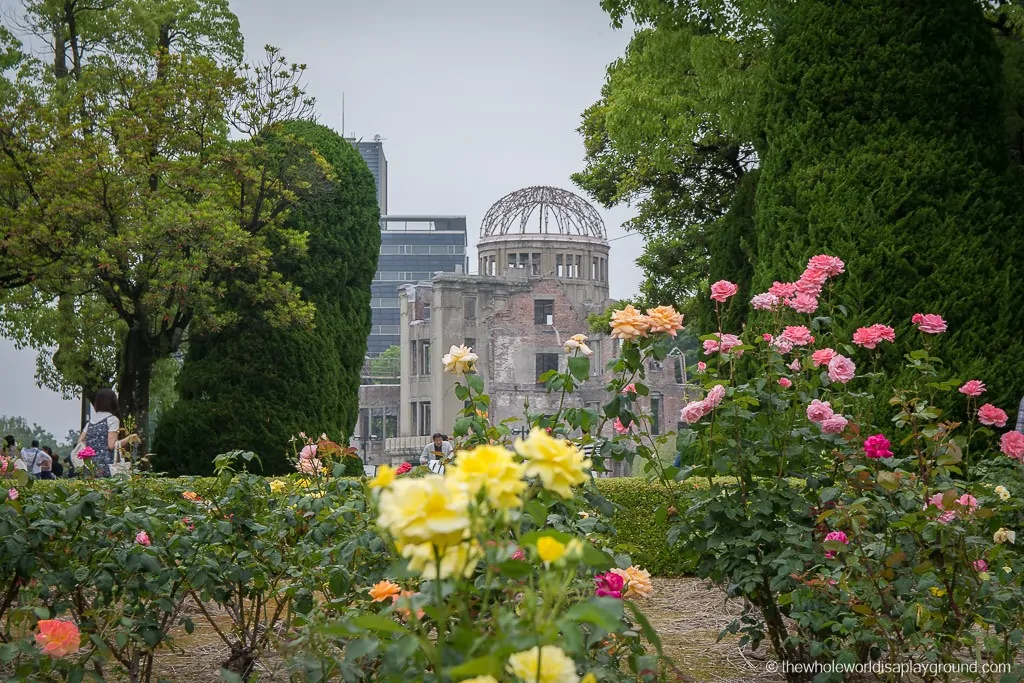
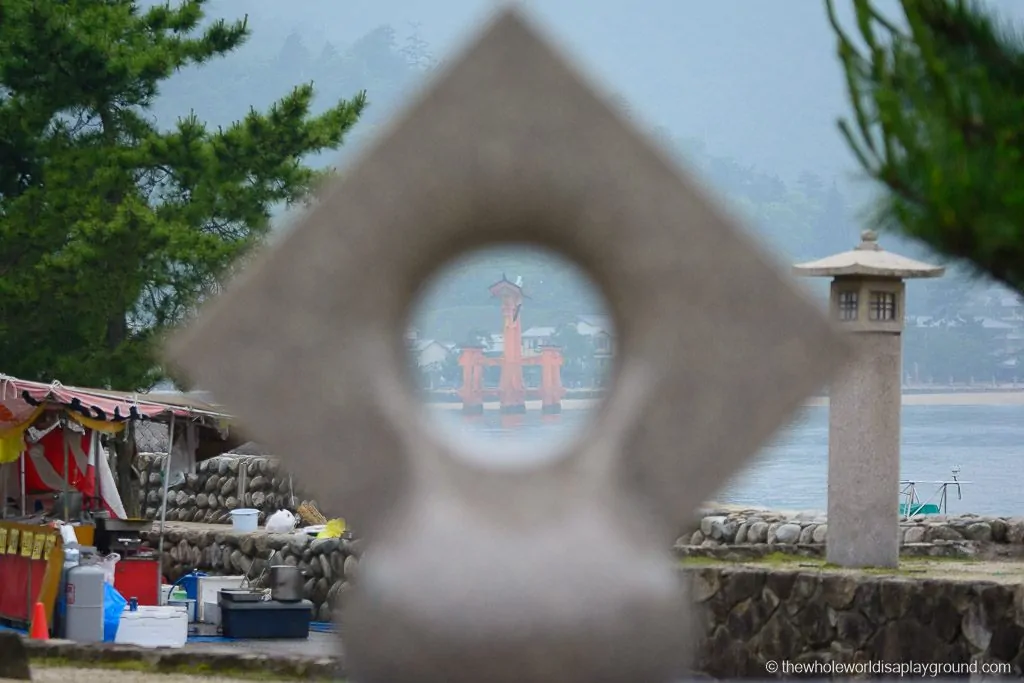
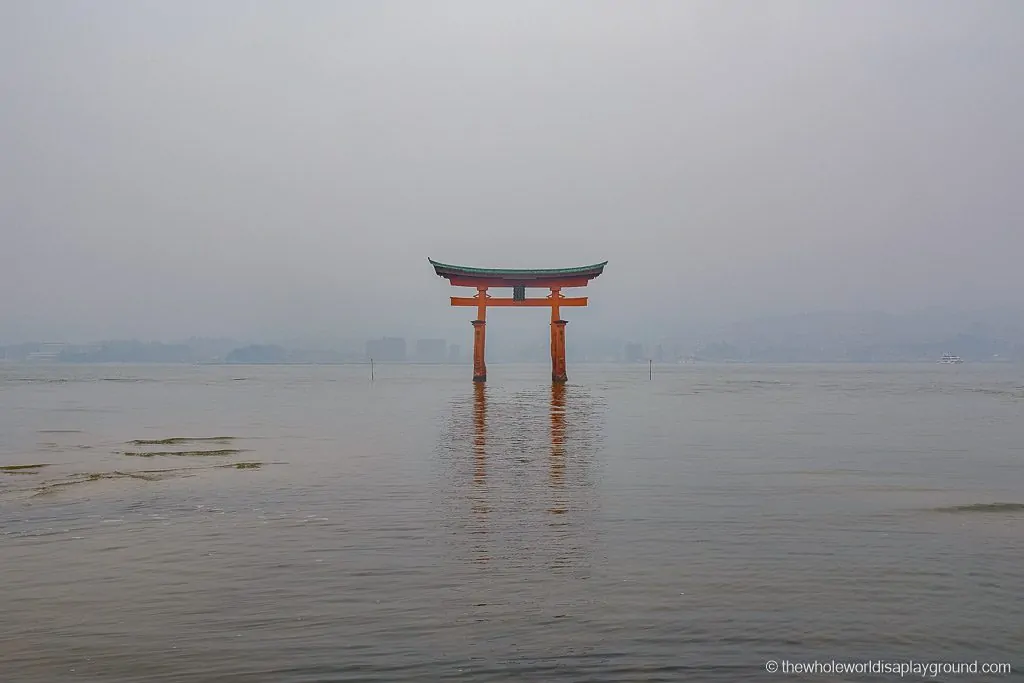
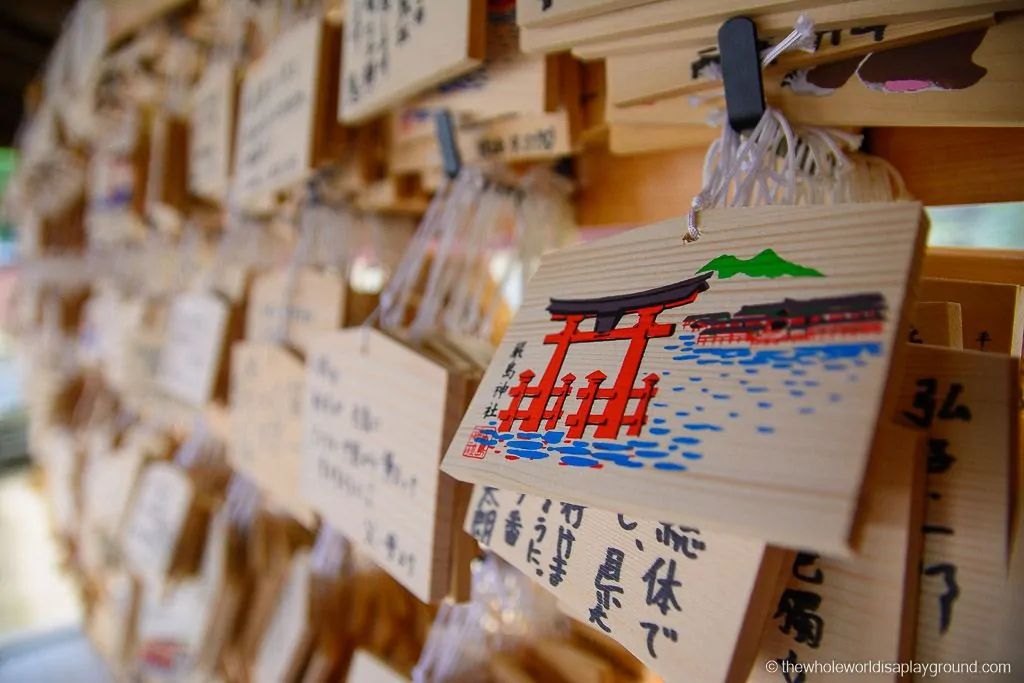
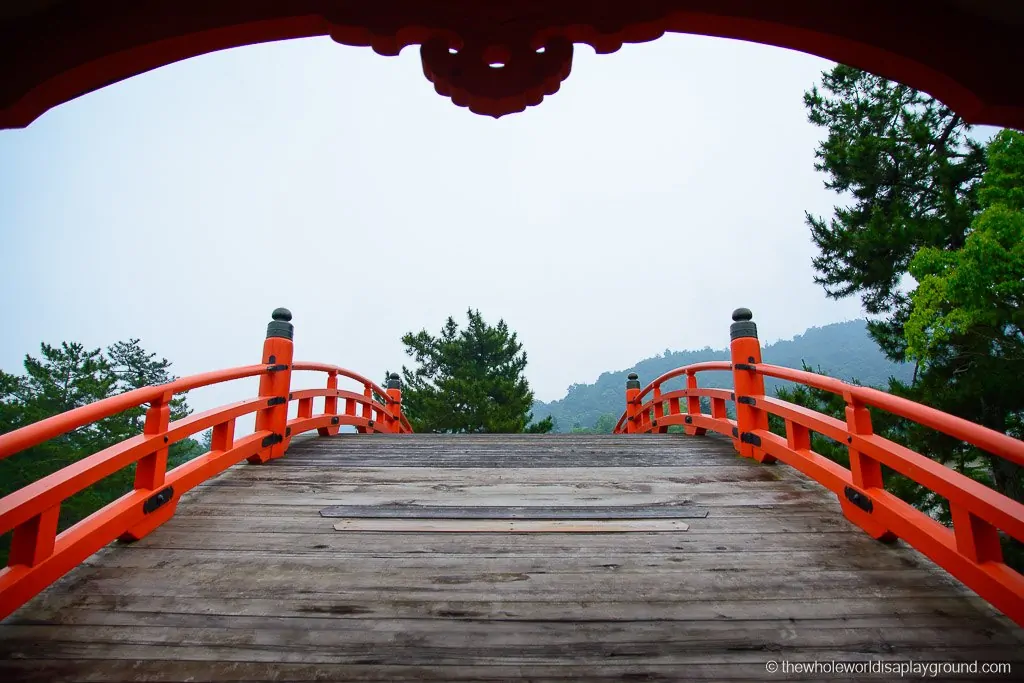
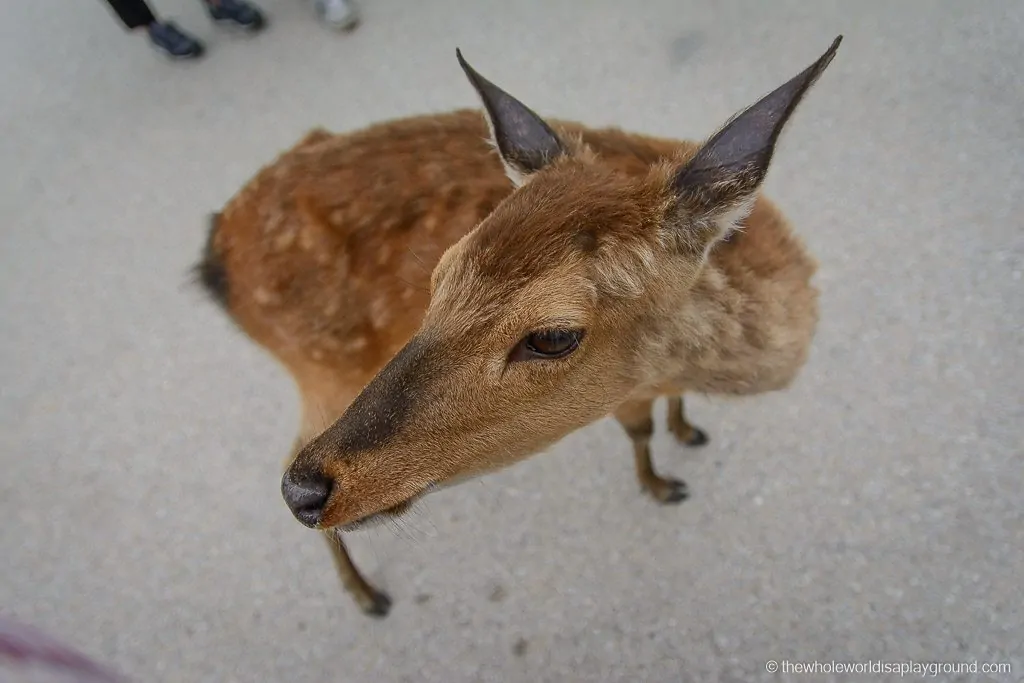
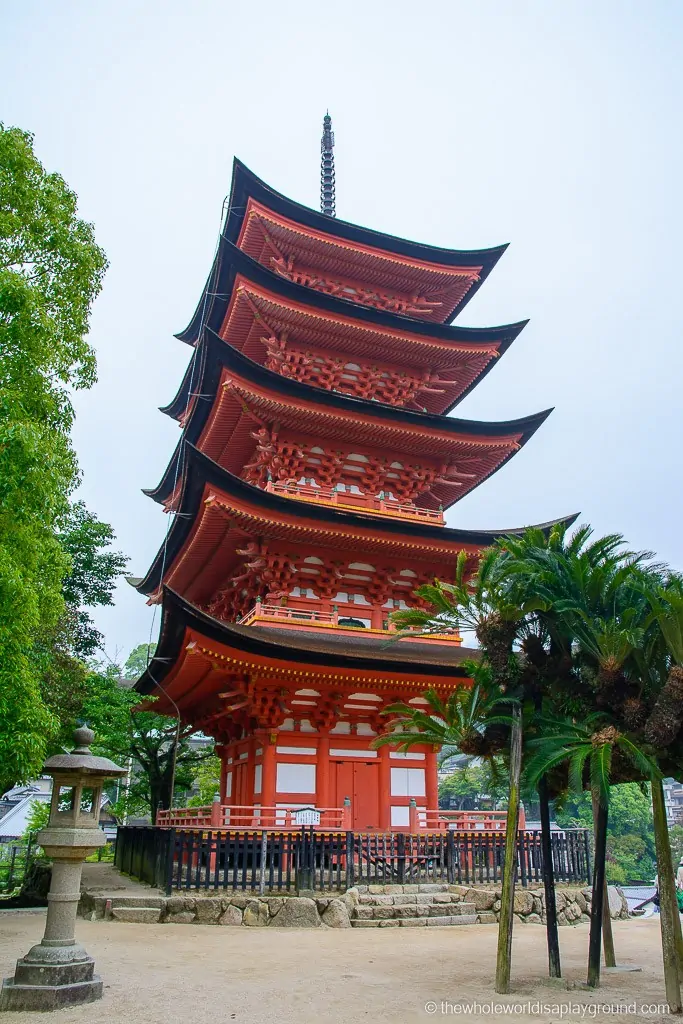
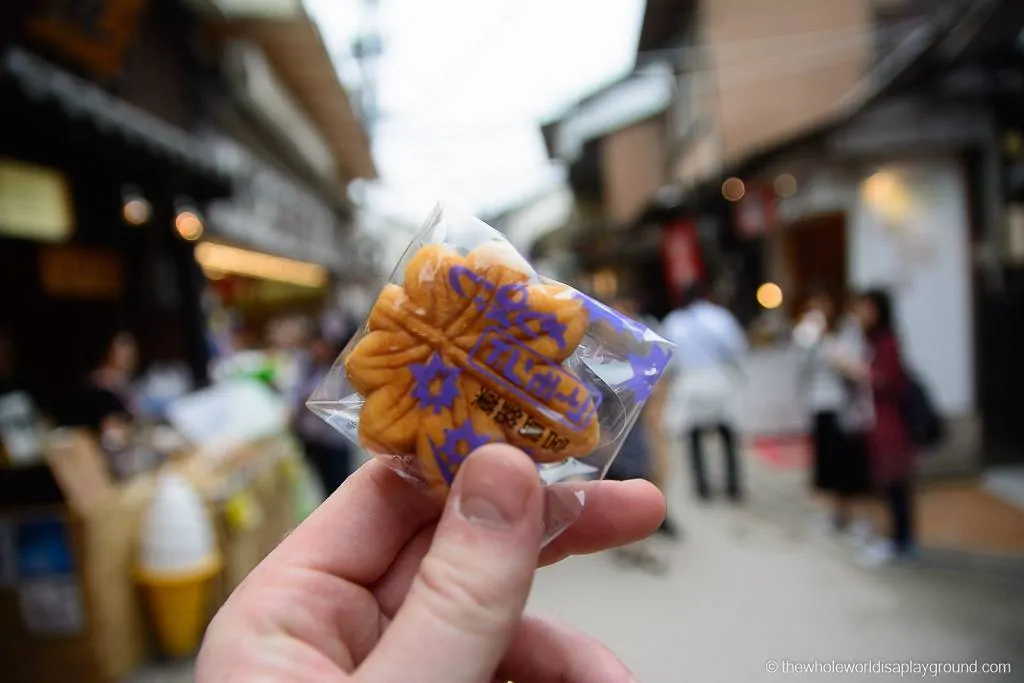
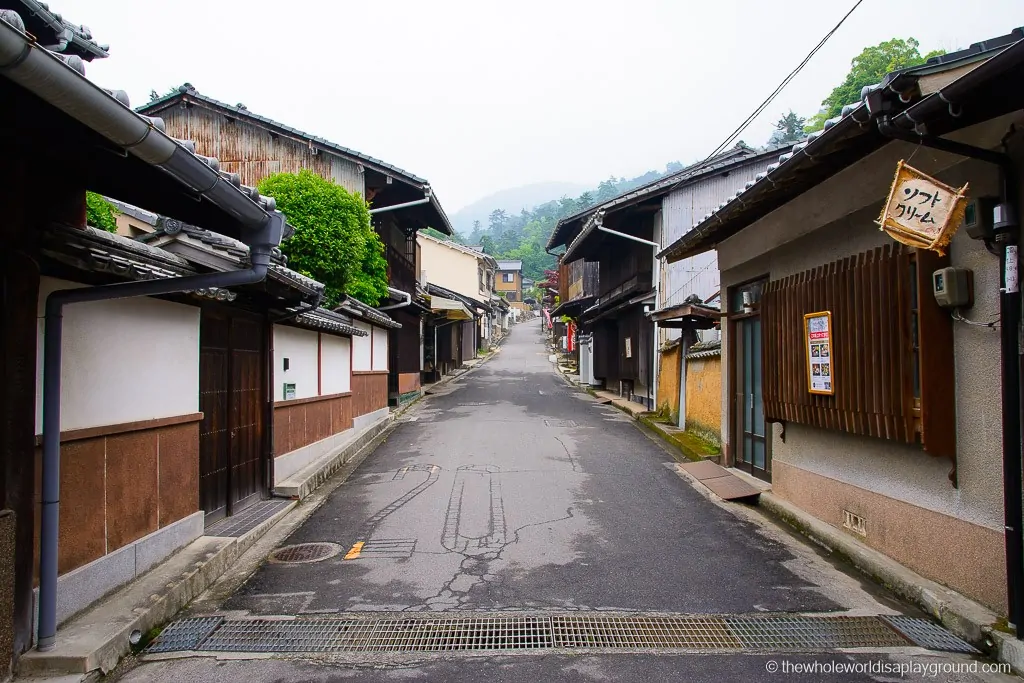
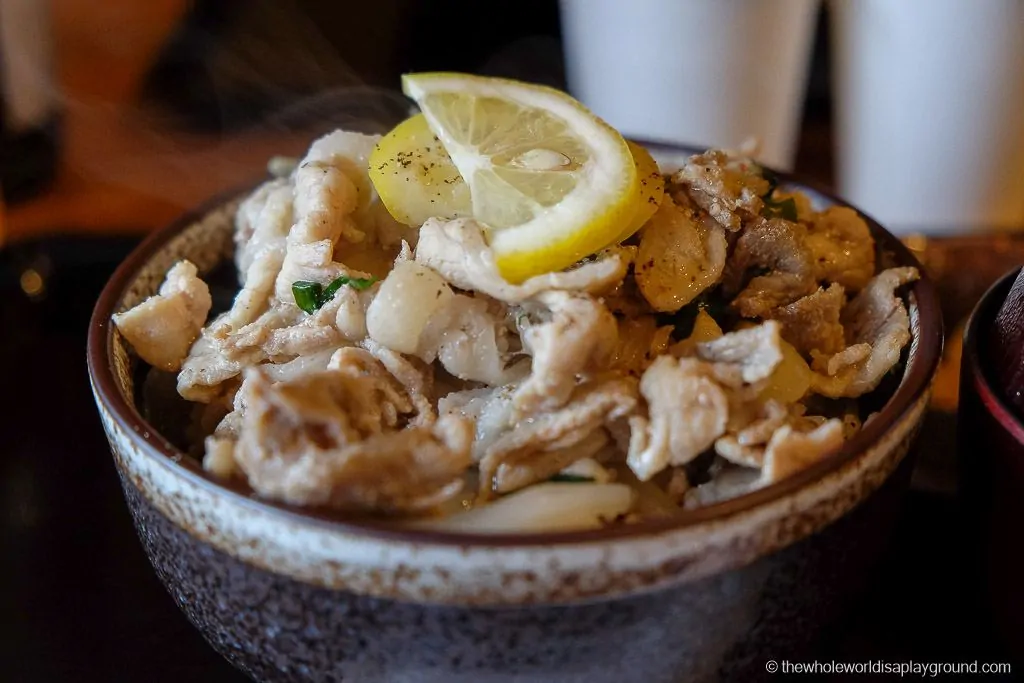
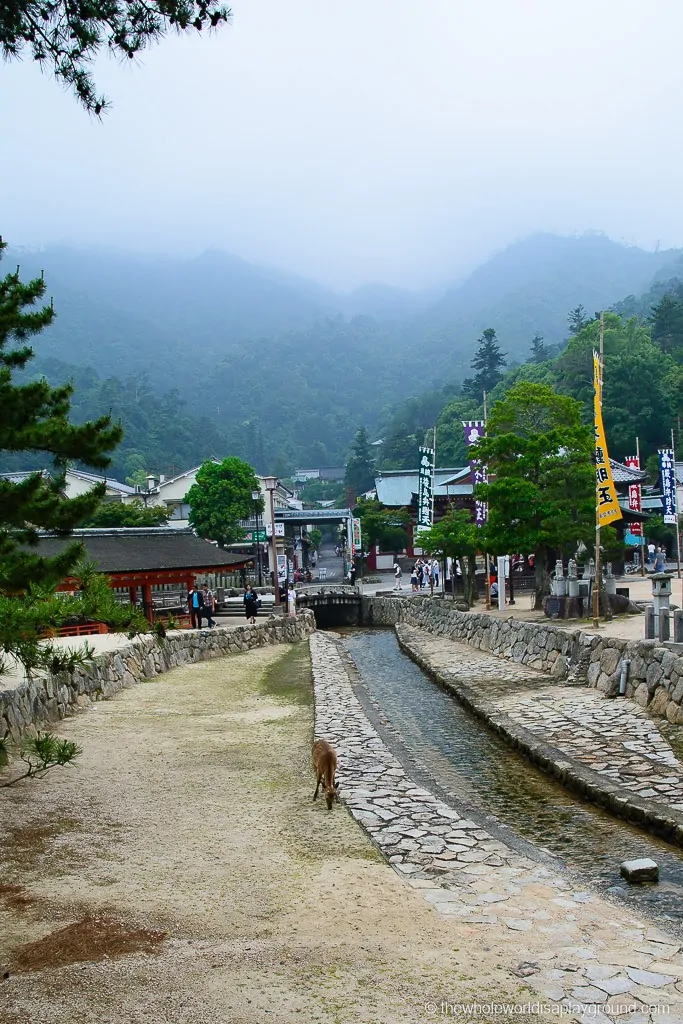
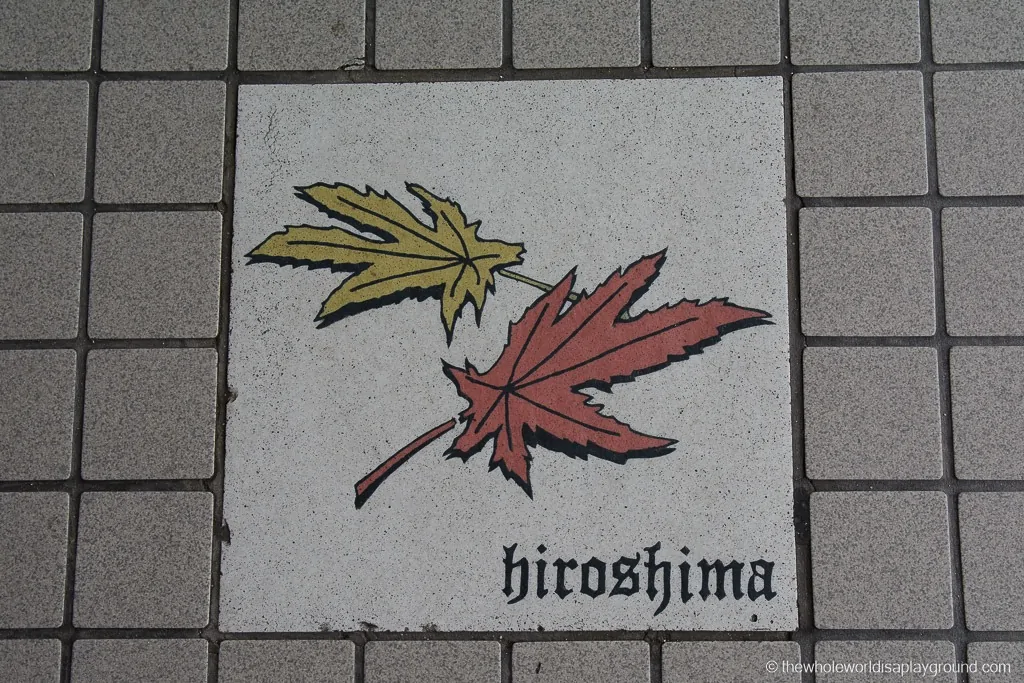
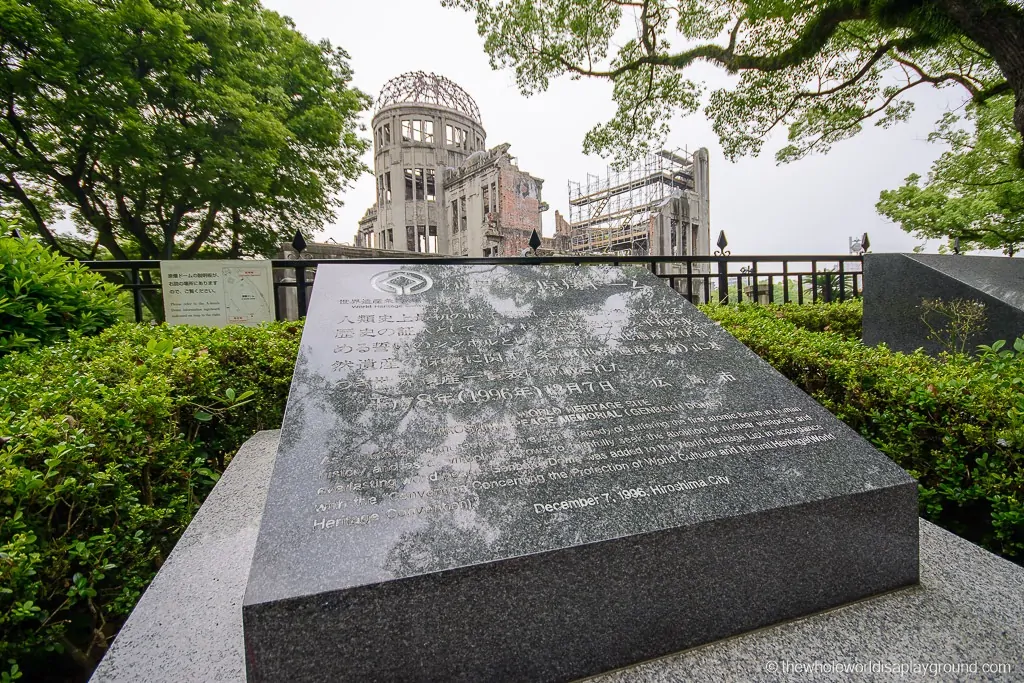
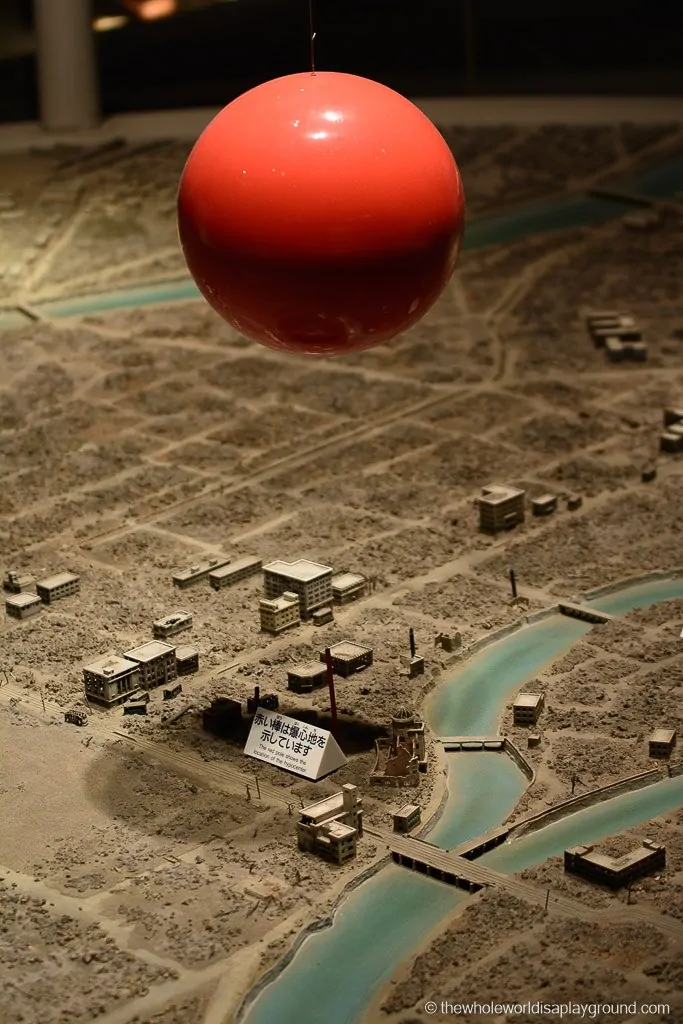
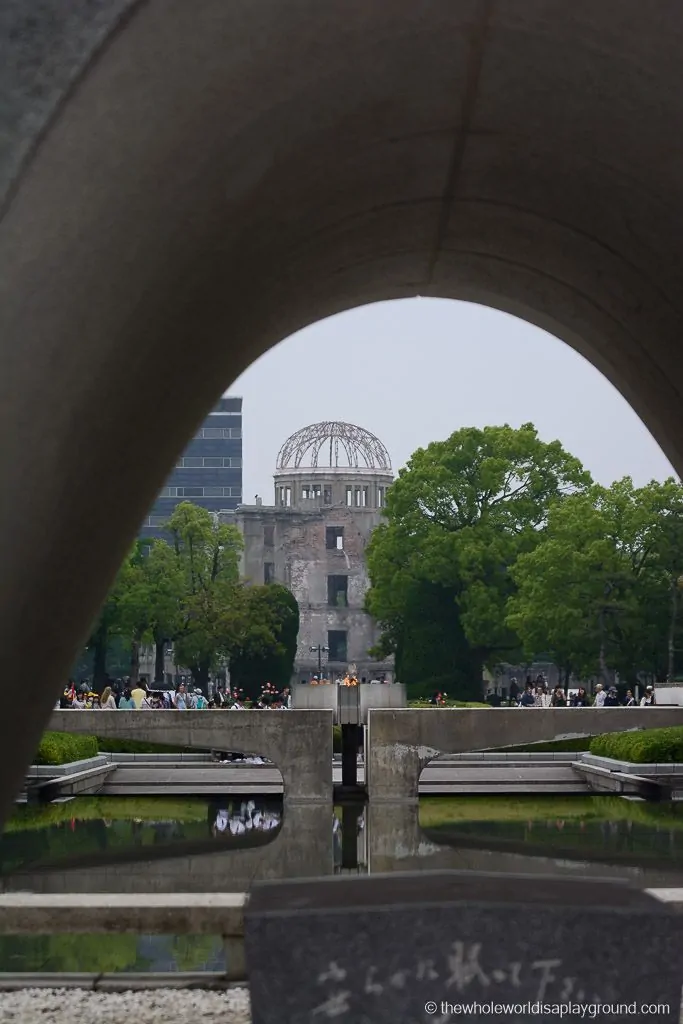
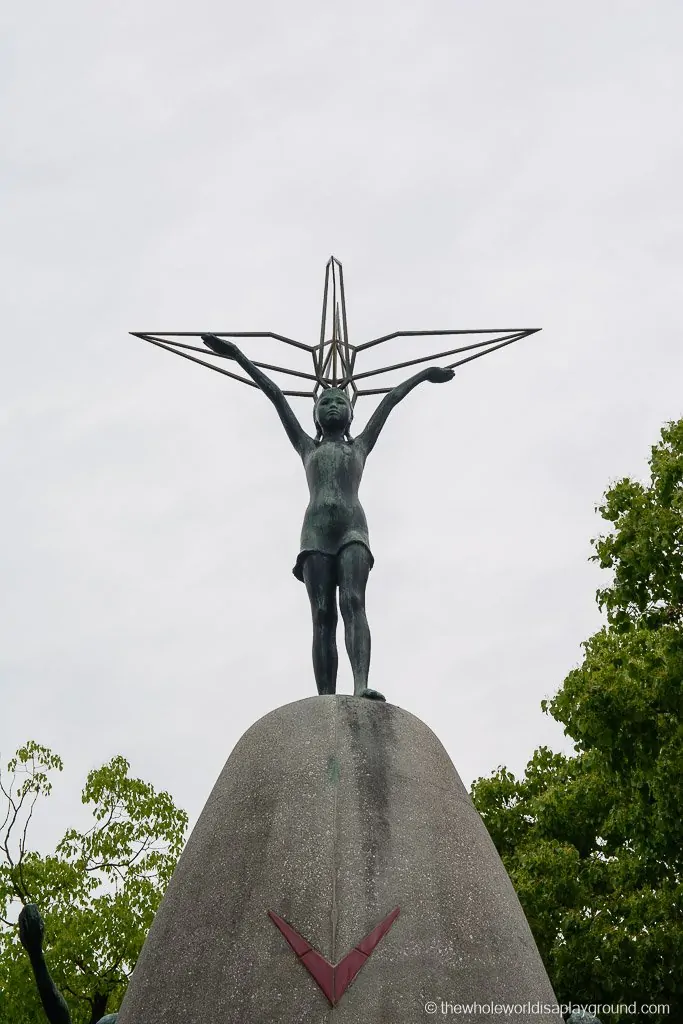
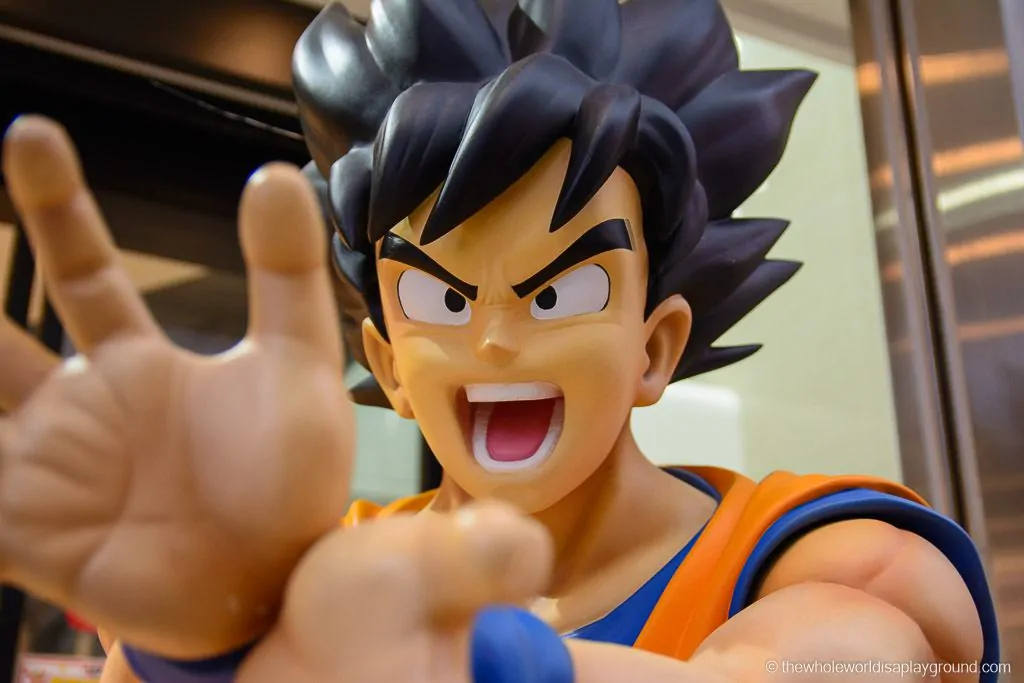
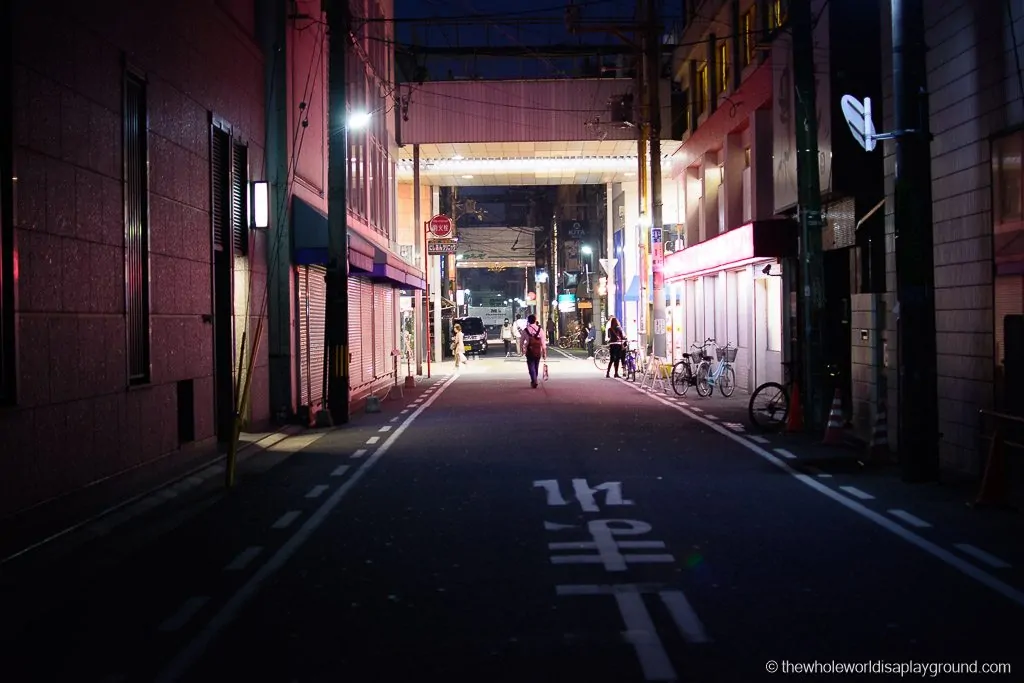
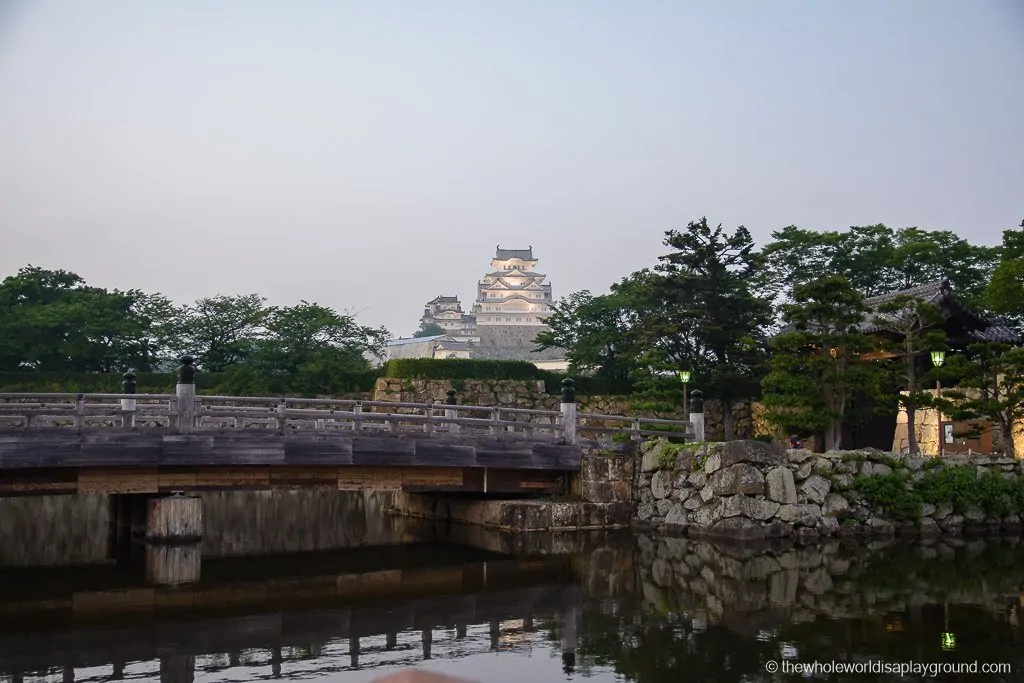
Did you visit Miyajima, Hiroshima, AND Himeji all in one day, starting and ending in Kyoto? That seems like a very very long day.
My plan is to sleep in Arashiyama. Next morn train to Himeji. Visit castle, then train to Hiroshima hotel. Hiroshima and Miyajima the next day.
Your blog made the day trip seem so do-able, but is it realistic?
I really appreciate your notes. You seem to travel like I do.
We did but we left Kyoto really early, returned really late and were on a really tight schedule. We didn’t have time to spend a night but it would definitely be preferable and give you more time to spend at each of the places. We didn’t spend very long at Himeji.
Elaine
One more question:
Google maps places Sagano Bamboo Grove in a different location than Arashiyama Bamboo Grove (although very near to each other). I’m guessing they are one and the same, no? Or, are there two different bamboo forests in Arashiyama?
Hi Gina
They’re the same place as far as I know.
Elaine